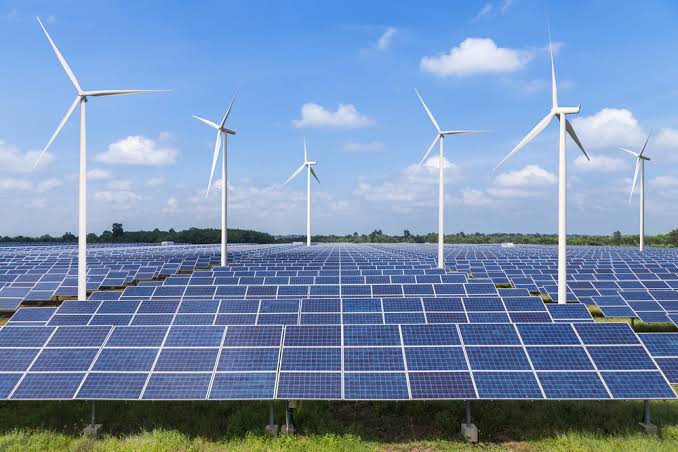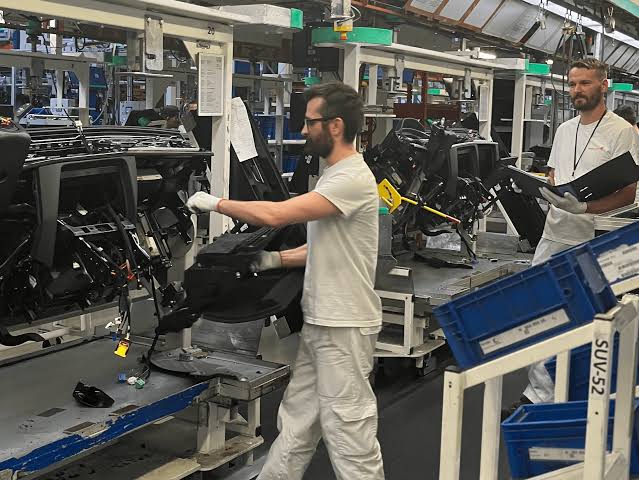Have you ever think of how you could land a job in one of Europe’s most exciting and fast-growing industries — renewable energy? Maybe you’ve thought about making a career switch or you’re a fresh graduate looking to start somewhere meaningful. Either way, if the idea of working in a field that helps save the world while offering good pay and long-term career growth appeals to you, then Europe’s renewable energy sector might just be the perfect fit.
The world is shifting towards clean and sustainable energy, and Europe is one of the leaders in this global movement. The energy is everywhere from wind farms in Denmark to solar projects in Spain and green hydrogen in Germany. And guess what? They need people like engineers, technicians, analysts, marketers, project managers, electricians…you name it. The sector is full of opportunities, but getting your foot in the door might seem confusing if you don’t know where to start. That’s where this guide comes in.
I’ll walk you through what you need to know and do, step-by-step, to land a job in Europe’s renewable energy space, all in a way that’s easy to understand and not boring to read.
An Overview of the Renewable Energy Sector and Jobs in Europe
Europe has been a frontrunner in the renewable energy game for years. Many European countries have made strong commitments to move away from fossil fuels and reduce their carbon emissions. With EU goals to become climate-neutral by 2050, there’s a heavy focus on wind, solar, hydro, bioenergy, and more recently, green hydrogen.
Because of this, the job market in the renewable energy sector is booming. According to the International Renewable Energy Agency (IRENA), Europe’s renewable energy employment numbers have been on a steady rise. Countries like Germany, the Netherlands, Spain, and Denmark have created thousands of jobs in just the past few years.
The types of jobs available are also quite broad. You don’t necessarily need to be an engineer to work in this field. Sure, there are a lot of technical roles like solar panel installation, wind turbine maintenance, and energy system design. But there are also roles in policy, communication, environmental science, data analysis, logistics, and even education. Whether you’re a numbers person, a hands-on technician, or someone who loves working with people, there’s probably a place for you in renewable energy.
How to Get Renewable Energy Jobs in Europe
Alright, let’s break this down step-by-step. If you’re serious about working in Europe’s renewable energy sector, here’s how to go about it:
Step 1: Figure Out Your Fit
The first thing you want to do is figure out where you fit in the renewable energy world. Are you into engineering? Project management? Sales and marketing? Environmental policy? Knowing your strengths and interests will help you narrow down the type of job that suits you.
For example, if you studied mechanical or electrical engineering, you could look into wind turbine design or solar system installation. If you’re from a business or policy background, you might be better suited for sustainability consulting, regulatory affairs, or project coordination.
Step 2: Gain the Right Skills or Qualifications
You don’t always need a fancy degree, but having the right qualifications or certifications helps a lot. If you already have a degree, try adding a renewable energy certification to boost your profile. There are loads of short online courses on platforms like Coursera, edX, or FutureLearn that focus on wind energy, solar systems, green energy finance, and more.
For hands-on work like installations or maintenance, vocational training or apprenticeship programs in Europe could be very helpful. You should also look into whether your qualifications are recognized in the country you want to work in.
Step 3: Do Your Research on Countries and Companies
Not all European countries have the same demand or opportunities. For example, Germany and the Netherlands are leading in wind and hydrogen, Spain has massive solar farms, and Scandinavia is big on hydroelectric power.
Research the companies working in the field. Big names include Vestas (Denmark), Siemens Gamesa (Spain), Ørsted (Denmark), and Iberdrola (Spain), but there are also lots of small and mid-sized companies doing innovative work. Start following their career pages, news, and projects.
Step 4: Update Your CV and LinkedIn
European employers tend to prefer clear, simple CVs. Two pages max, with a strong focus on your skills, experience, and certifications. Tailor your CV to each job you apply for. And don’t forget LinkedIn—it’s a huge job-hunting tool in Europe. Make sure your profile is up-to-date and reflects your renewable energy interests.
Include keywords like “renewable energy,” “solar power,” “wind turbine,” “sustainability,” “energy systems,” depending on what role you’re targeting. That way, recruiters searching for candidates can find you more easily.
Step 5: Apply to Jobs and Internships
Now comes the action part which is to start applying. Don’t only apply to big companies; small renewable startups and consultancies often have great entry-level roles or internships that can give you solid experience.
Look at European job websites like:
- EuroJobs
- EURES (the European Job Mobility Portal)
- GreenJobs
- Renewable Energy Jobs
- LinkedIn Jobs
- Indeed Europe
Also consider reaching out directly to companies you like, even if they haven’t posted a job. A polite message or email expressing interest can go a long way.
Step 6: Learn a Local Language (If Needed)
In many European countries, English is enough to get by, especially in international companies. But if you’re looking to work in local teams or in countries like France, Germany, or Spain, learning the local language can give you a big advantage. It shows you’re serious, adaptable, and open to the culture.
Step 7: Know the Visa Process
If you’re not from the EU, you’ll need a work visa. The good news is many European countries are open to skilled foreign workers, especially in high-demand fields like renewable energy.
Check the visa requirements for your target country. Some countries offer special “Blue Cards” or fast-track permits for skilled workers. If you’re still a student or fresh graduate, you could apply for internships first, which sometimes lead to permanent roles and easier visa options.
Frequently Asked Questions
Now, let’s answer some recurring questions regarding renewable energy jobs in Europe. I believe this will help you know how to secure one opportunity.
Which country in Europe has the most renewable energy?
That would be Norway. Thanks to its massive hydroelectric power capacity, Norway gets nearly all its electricity from renewable sources. But other countries like Iceland, Sweden, and Denmark are also doing very well.
Who is Europe’s largest renewable energy producer?
As of now, Iberdrola (based in Spain) is considered one of Europe’s biggest and most influential renewable energy producers. They’ve got projects across wind, solar, and hydro—and they’re expanding fast across Europe and beyond.
What is the most in-demand job in renewable energy?
Some of the most in-demand roles right now include wind turbine technicians, solar PV installers, energy analysts, and project engineers. But roles in supply chain, software development for energy systems, and energy finance are also picking up.
Final Thoughts
Getting a job in Europe’s renewable energy sector might seem like a big dream, but it’s totally doable if you take it step-by-step. The industry is growing fast and hungry for talent from all backgrounds. Probably you’re into engineering, tech, science, or business, I will assure you there’s a place for you in Europe’s renewable energy industries.
Take the time to figure out where you fit, gain a few relevant skills, connect with the right people, and don’t be afraid to apply even if you don’t tick every box. Sometimes, passion, persistence, and a bit of boldness go a long way.
The world is changing, and energy is at the heart of that change. Why not be part of the team that’s making the future cleaner and brighter — starting right in Europe?






